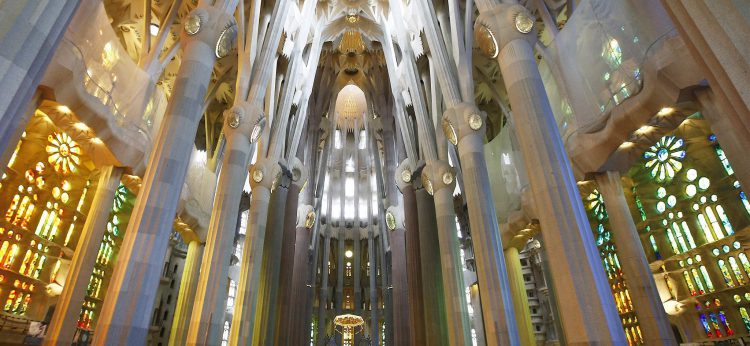Unique cancer arising after anti-CD19 CAR-T cell therapy
Representative micrographs demonstrate the phenotypic difference inbetween lymphoid and myeloid cancer cells. After anti-CD19 CAR-T cell therapy all patients achieved remission of B-cell ALL; however, in two cases patients relapsed with myeloid malignancies.
Immunotherapy represents a fresh wave of cancer therapies that are just injecting clinics or presently in trial. This treatment to cancer treatment re-trains a patient’s immune system to recognize and ruin tumor cells. While this can be achieved in numerous ways, chimeric antigen receptor (CAR)-T cell therapy has recently demonstrated high success for B cell malignancies. In this treatment, patient T cells are harvested and genetically modified to recognize and ruin any cell voicing CD19. CD19 is voiced on B cells, both healthy and cancer alike. While healthy B cells are collateral harm, this therapy ablates cancer cells. Trials using this treatment have been over 90% effective at achieving stable remission in patients suffering from B cell malignancies who failed to react to any conventional therapy. Scientists in the Clinical Research Division at Fred Hutch have been on the forefront of CAR-T cell therapy from pre-clinical development through the current patient trials. In any clinical trial non-responding or resistant patients emerge; however, Dr. Cameron Turtle and colleagues in the Riddell lab report in their latest publication in Blood, on an exceedingly unique pair of cases that did not achieve sustained remission. Two patients enrolled in the anti-CD19 CAR-T cell trial were cured of B cell ALL, however, instantaneously following remission they acquired an AML-like cancer.
No single drug will work in every patient. When it comes to cancer each tumor has its own molecular background, moreover a patient’s unique biochemistry may further alter a therapy’s effectiveness. Thus when a therapy is effective in some patients but not others it is significant to understand what was different inbetween these two groups. In a pair of very successful clinical trials for anti-CD19 CAR-T cell therapy twenty seven out of twenty nine patients reached a sustained remission, yet to proceed improving cancer treatment these researchers are working to understand why two patients did not achieve that remission. It is difficult to draw conclusions from only two patients; however, there were a number of striking similarities in these cases. Due to the mechanism of the therapy, only patients with B cell specific leukemia were enrolled in the trials, yet not all B cell leukemia have the same underlying molecular lesions. The cancers in seven patients on the trials contained the MLL rearrangement. The mixed lineage leukemia (MLL) gene encodes a histone methyltransferase that is significant for hematopoietic development. In some instances a large chromosomal rearrangement near the MLL gene deregulates its activity. All seven of the MLL rearranged cases achieved remission, however, two of this group quickly relapsed, but seemingly with a fresh cancer. As hematopoietic stem cells differentiate they split into two major classes, lymphoid and myeloid. This is the difference inbetween lymphoid (CLL/ALL) and myeloid leukemia (AML/CML), they arise from the partially differentiated cell lineages. In both cases of remission the patients were originally diagnosed with ALL, based on both microscopic pathology and cell type specific protein expression. Upon relapse the cancer cells were no longer voicing the CD19 marker targeted by the CAR-T cells, but also voiced markers consistent with a myeloid cancer (CD56, CD13, and CD64).
This result begs the question, how did this different cancer type arise? With only two cases it is difficult to say, but the authors present two possible mechanisms. The very first hypothesis is that a lymphoid cancer cell was able to reprogram itself into the myeloid type. In fully differentiated normal cells this sort of re-differentiation does not happen, but leukemic cells adopt an immature phenotype somewhere inbetween stem cells and fully differentiated ones, thus such a transition may be possible. In fact, there have been uncommon reports of such a switch after intensive chemotherapy. One of the cases in this investigate supports such a model. Researchers analyzed the genetic mutations in the ALL and AML-like cells, both contained the MLL rearrangement and mutation within another oncogene, IGH. These collective features suggest they arose from a common cell, consistent with type switching. Another hypothesis is that while the ALL cells predominated the patients blood, infrequent myeloid cells existed but at lower proliferation rates. After anti-CD19 therapy eliminated the ALL cells this permitted the outgrowth of the infrequent AML-like population. This hypothesis was supported by the 2nd case; in that patient both lymphoid and myeloid cells contained the MLL rearrangement, yet differed in the mutational status of IGH.
While it is difficult to draw many conclusions from these early findings, these researchers suggest that patients with MLL-B-ALL may need closer observation and explore during CAR-T cell therapy.
Gardner R, Wu D, Cherian S, Fang M, Hanafi LA, Finney O, Smithers H, Jensen MC, Riddell SR, Maloney DG, Turtle CJ. (2016). Acquisition of a CD19 negative myeloid phenotype permits immune escape of MLL-rearranged B-ALL from CD19 CAR-T cell therapy. Blood. Epub ahead of print.
Funding for this research was provided by the Conquer Cancer Foundation, Alex’s Lemonade Stand, St. Bladrick’s/Stand Up two Cancer, the National Cancer Institute, and Damon Runyon Cancer Research Foundation.
